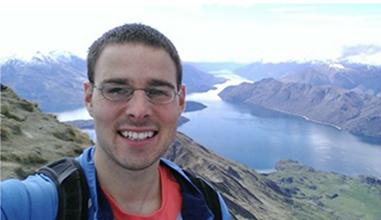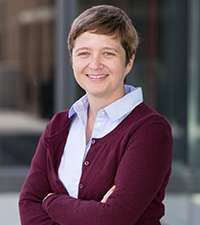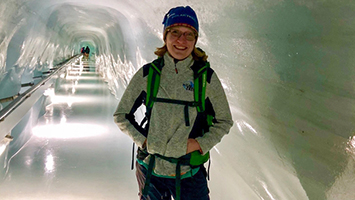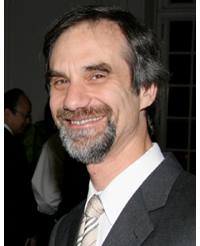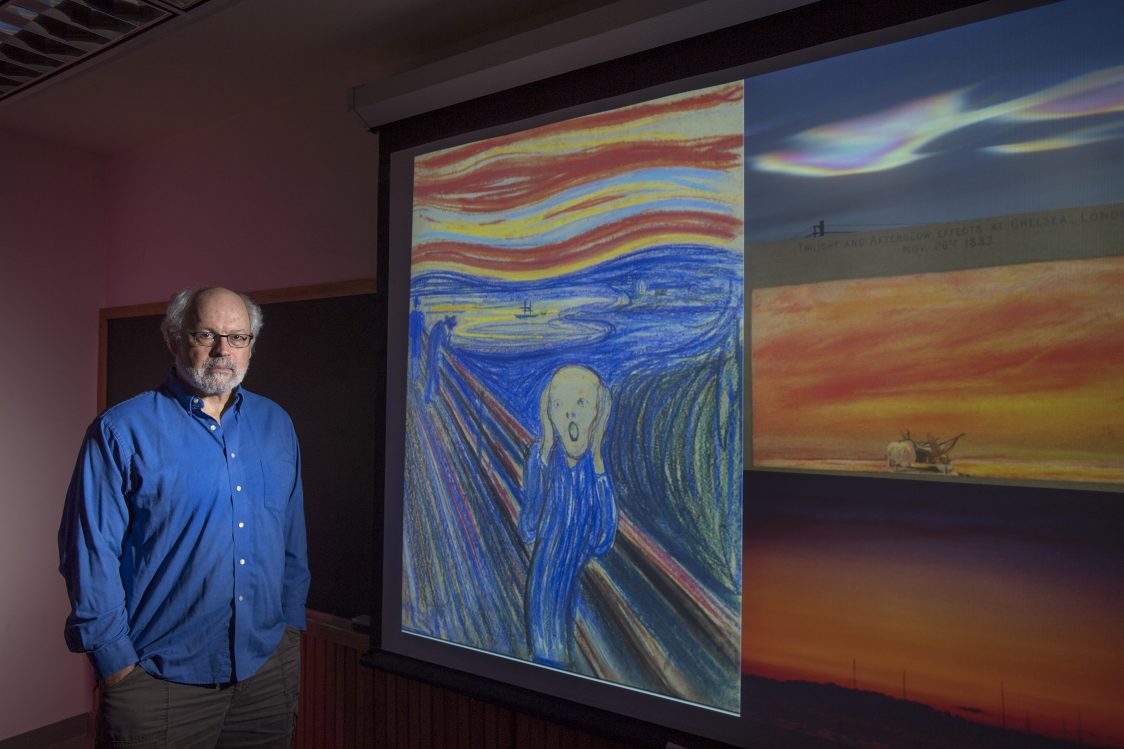By Carol Peters Clem will use the models to investigate how thunderstorm activity in the South Pacific Convergence Zone affects the climate of Antarctica. “I have been focusing on getting two climate models set up and running locally at Rutgers on our OARC Amarel High Performance Community Cluster,” said Kyle Clem, Ph.D., who is an atmospheric scientist, describing his recent work as …
Professor Katherine Dawson Discusses her Latest Research and Her Passion for Science
By Mary Ellen Dowd and Ryan Stiesi The EOAS faculty member’s latest research examines how microbial communities process organic carbon in sediments, which can help inform future changes in the carbon cycle and promote pollutant breakdown. Assistant Professor in the Department of Environmental Sciences and a Rutgers Institute of Earth, Ocean and Atmospheric Sciences (EOAS) faculty member Katherine Dawson, along …
Rutgers Geology Museum Co-Director Studies Glaciers in the Swiss Alps
Lauren Neitzke Adamo is working in Switzerland with a team of researchers to measure the topography of the exposed former beds of glaciers in the Alps to create computer models that can be used to predict future sea level rise. Adamo has been selected for a PolarTREC Expedition. PolarTREC (Teachers and Researchers Exploring and Collaborating) is a program that selects formal and …
Michael Stein, EOAS’ Inaugural Distinguished Visiting Fellow, Will Focus on Climate Problems
By Carol Peters During his visit to Rutgers this fall, Stein, an environmental statistician, will take advantage of resources in New Jersey to conduct research on climate, teach a graduate course, and seek to develop lasting collaborations with environmental scientists at Rutgers. Michael Stein, the Ralph and Mary Otis Isham Professor of Statistics at the University of Chicago, is a …
EOAS Plays Key Role in Development of the Mid-Atlantic Ocean Data Portal
By Ryan Stiesi The portal provides its users, from scientists to fishermen, with a place to enter and access data on the ocean, leading to a better informed and more equitable ocean policy. In a time of political division in the United States, a team of Rutgers faculty and staff are working to foster collaboration between the federal and state …
Baby Sea Snails Ride Waves into Shallower Waters, Study Suggests
Rutgers-led research documents the effects of turbulence and waves on snail larvae. The warming ocean may cause the larvae of bottom-dwelling snails to hatch earlier in the spring, when waves are larger, potentially impacting their ability to survive and serve as food for other sea creatures. A Rutgers University–New Brunswick study sheds new light on the sensory organs the snail …
EOAS’ Mark Miller Rebuilds Rutgers’ Photochemical Assessment Monitoring (PAM) Station
Written by Ryan Stiesi Videography by Walker Perry The Rutgers PAM Site is now arguably the most sophisticated air quality and atmospheric radiation measurement system in the U.S. Northeast. When Professor of Atmospheric Science Mark Miller took over Rutgers’ Photochemical Assessment Monitoring (PAM) Station in 2011, he was determined to rebuild it into one of the most advanced and effective …
The Scream: What Were Those Colorful, Wavy Clouds in Edvard Munch’s Famous Painting?
Rutgers and UK scientists suggest “mother-of-pearl” clouds inspired the Norwegian artist. What inspired the iconic red-and-yellow sky in The Scream, the painting by Norwegian artist Edvard Munch that sold for a record $119.9 million in 2012? Some say it was a volcanic sunset after the 1883 Krakatau eruption. Others think the wavy sky shows a scream from nature. But scientists at Rutgers …
Mourning the Passing of a Great Leader, Mentor and Friend Fred Grassle
It was a profound shock for Rutgers to learn that Fred Grassle had passed away. Fred was our leader, mentor, partner in adventures at sea, and most of all a great friend. At marine sciences we have always called the marine science building the “home that Fred built”, and it is a home thanks to his warmth and generosity. Without …



